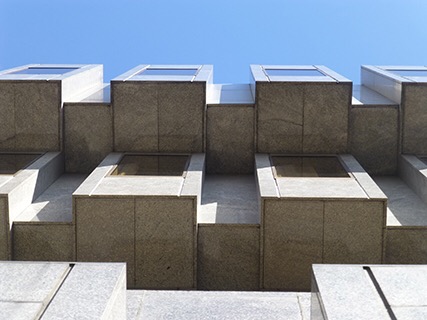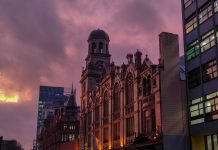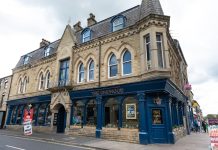The work of leading modern architects is being celebrated today by English Heritage with the listing of fourteen of the finest post-war office buildings in England.
The project to assess commercial buildings from 1964 to 1984 includes four buildings by Arup & Associates (1 Finsbury Avenue in London, Gateway House in Basingstoke, Central Electricity Generating Board in Bristol, Gun Wharf in Chatham), two by Richard Seifert & Partners (Space House, London, Alpha Tower in Birmingham) and IBM Pilot Head Office, Cosham by Foster Associates.
Buildings generally become eligible for listing once they pass 30 years from the start of construction, and the earlier on owners can establish whether their building is likely to become listed, the earlier on they can start to plan.
This is particularly desirable with commercial buildings which are especially prone to frequent adaptation.
With modern offices, the special interest is often concentrated in certain parts of the building: it might be just the lobby, boardroom and façade, that are of special interest, and so it can be clearly set out in the List description which parts of the building are not of interest and can therefore be changed without consent (potentially open office floors, underground car parks etc).
Heritage Minister, Ed Vaizey, said: “Listed buildings are not just about historic houses and ancient monuments, they also serve to protect our recent heritage and preserve the best examples of our fantastic architecture. This group of listings reflect the changing face of our working environment and represent the very best in design and it’s entirely right that they be listed Grade II.”
Roger Bowdler, Director of Designation at English Heritage, said: “The clearer we can be about what deserves to be listed, the better for all. These offices show how architecture has adapted to recent radical changes in how we work: they show how the open-plan working space for computer-led work came about, and how architects responded to the need for lettable, attractive spaces with ingenuity and a deep understanding of human needs. Our project has aimed to deliver certainty for owners, while adding to the range of those key buildings which are protected by law. These are all remarkable designs, capable of years of commercially vibrant use. The project has been notable for its extensive research, and for close dialogue with owners.”
The 14 buildings listed at Grade II announced today are:
Brown Shipley, Moorgate, City of London, Fitzroy Robinson & Partners, 1973-5
30 Cannon Street (formerly Credit Lyonnais), London, Whinney, Son & Austen Hall, 1974-7
1 Finsbury Avenue, City of London, Arup Associates’ Group 2 led by Peter Foggo, 1982-4
Civil Aviation Authority House, (formerly Space House), Kingsway, Camden London, George Marsh of Richard Seifert & Partners, 1964-8
Mountbatten House (formerly Gateway House), Basingstoke, Arup Associates’ Group 2 led by Peter Foggo, 1974-76. The roof gardens at Mountbatten House have also been added to the Register of Parks and Gardens at Grade II
IBM Pilot Head Office, Cosham, Foster Associates, 1970-71
Gun Wharf (built as administrative headquarters for Lloyds of London, now civic headquarters for Medway Council), Chatham, Kent, Arup Associates, 1976-8
Former office of Ryder and Yates, Killingworth, Newcastle, Ryder and Yates, 1964-5
MEA House, Newcastle upon Tyne, Ryder and Yates, 1972-4
Bank House, King Street, Leeds, Building Design Partnership, 1969-71
Former Midland Bank, Dale Street, Liverpool, Raymond Fletcher of Bradshaw, Rowse & Harker, 1971
St James’s House, Frederick Street, Birmingham, John Madin, 1954-7
Alpha Tower, Birmingham, George Marsh of Richard Seifert & Partners, 1970-2
Former Central Electricity Generating Board Building (The Pavilions), Bristol, Arup Associates, 1975-8







